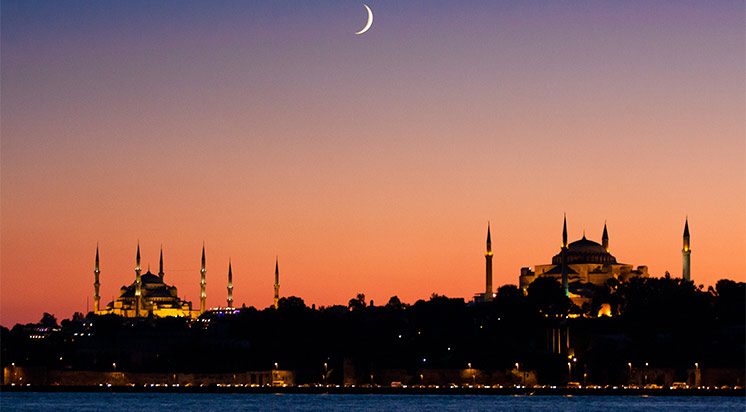
There’s still quite a bit of preliminary-draft manuscript to go, so I need to keep going. Here’s another installment:
Fascinating as they are, though, neither the Safavids nor the Mughals ruled over Arab peoples. It is the Ottoman Empire that most particularly concerns us, since it was the Ottomans who came to rule over the Arabs, and since it is the Arabs who are the special concern of this book. The Ottoman Empire lasted for a long time. It began somewhere around the year 1300, and at least limped on until 1922. In the 1500s and 1600s, it was far and away the most powerful empire in the world; at its height it held not only Anatolia (modern Turkey) but also southwest Asia (Syria, Palestine, part of Iraq, the Arabian Peninsula), southeast Europe (including Greece and the Balkans), Egypt, and much of North Africa. The walls of the present-day Old City of Jerusalem were built by its Turkish imperial masters.
The Ottomans were originally nomadic Turkic tribes from Central Asia enlisted, as many Turks had been, to help fight the “infidel” Byzantines. They converted to Sunni Islam, as Turks generally did, and indeed became truly fearsome border warriors. But they soon realized that they could also fight on their own behalf. So why not carve out their own state? Their founder and first sultan was a man named Osman.[1] He inaugurated a series of successful rulers that, for sheer consistency, has little parallel anywhere in world history. One of the first notable achievements of the Ottomans was the conquest of the city of Bursa in Anatolia (Asia Minor, or contemporary Turkey) in the year 1326. Bursa would serve as their capital until the conquest of Constantinople in the fifteenth century, and they adorned it with notable and distinctive buildings. Ottoman expansion came at the expense of the Byzantines in Anatolia. This is not surprising, of course. It was their duty and their reason for being brought to the region in the first place. Their efforts culminated in the seizing of Constantinople in 1453 with the collapse of the Byzantine Empire. From this point on, there was no Byzantine Empire left to fight, so the holy warriors of the Ottoman Empire turned their cannons and their muskets to the East, against their fellow Muslims.
But before we speak of the significant Ottoman impact on the Arab world, another of their opponents merits brief mention if only because he is famous in the West. It is a peculiar fame. Very few Westerners have any idea who this person really was, and many would not even recognize his title. He seems almost to have been a particular obsession of Mehmet II, the Conqueror, the man who had succeeded in taking Constantinople after centuries of Muslim daydreaming and failed attempts. Mehmet was never able to put an end to this man, who tormented him for years and finally died peacefully in bed. The man’s name was Vlad Tepish. He lived in a region known as Transylvania, or modern Romania. Vlad was also known as Vlad Dracul, “Vlad the Impaler,” because he had the endearing habit of impaling captured enemies on stakes. The legend of “Dracula”—or that portion of it that was not invented in Hollywood (and a large part of the vampire legend was, in fact, devised by Hollywood screenwriters)—seems to be derived from this cruel man.
For a long time after 1453, most Ottoman opponents were Muslim. (Certainly there were more Muslims than vampires.) In 1516, Syria fell to a successor of Mehmet II, a sultan known somewhat menacingly as Selim the Grim. The next year, 1517, saw the conquest of Egypt and the end of the Mamluks. One is almost inclined to pity them. They were, in a sense, prisoners of their own virtues. Their horseback heroism, so effective against the thirteenth-century Mongols, was pathetically (although perhaps nobly) out of date. When they defended Cairo against Selim’s armies, they took no cannons. They disdained artillery and firearms as beneath the dignity of a knight. And they were cut to shreds, as was anybody else who, for whatever reasons, failed to keep up with the times. Dignity and chivalry, as the armored knights of Europe also discovered, could not stand up to a peasant with a gun.
[1] This is the Turkish form of the Arabic name Uthman—the same as that of the third of the “rightly-guided caliphs” who succeeded the Prophet Muhammad—and it is from a distortion of his name that we derive the name of the empire itself, Ottoman.












